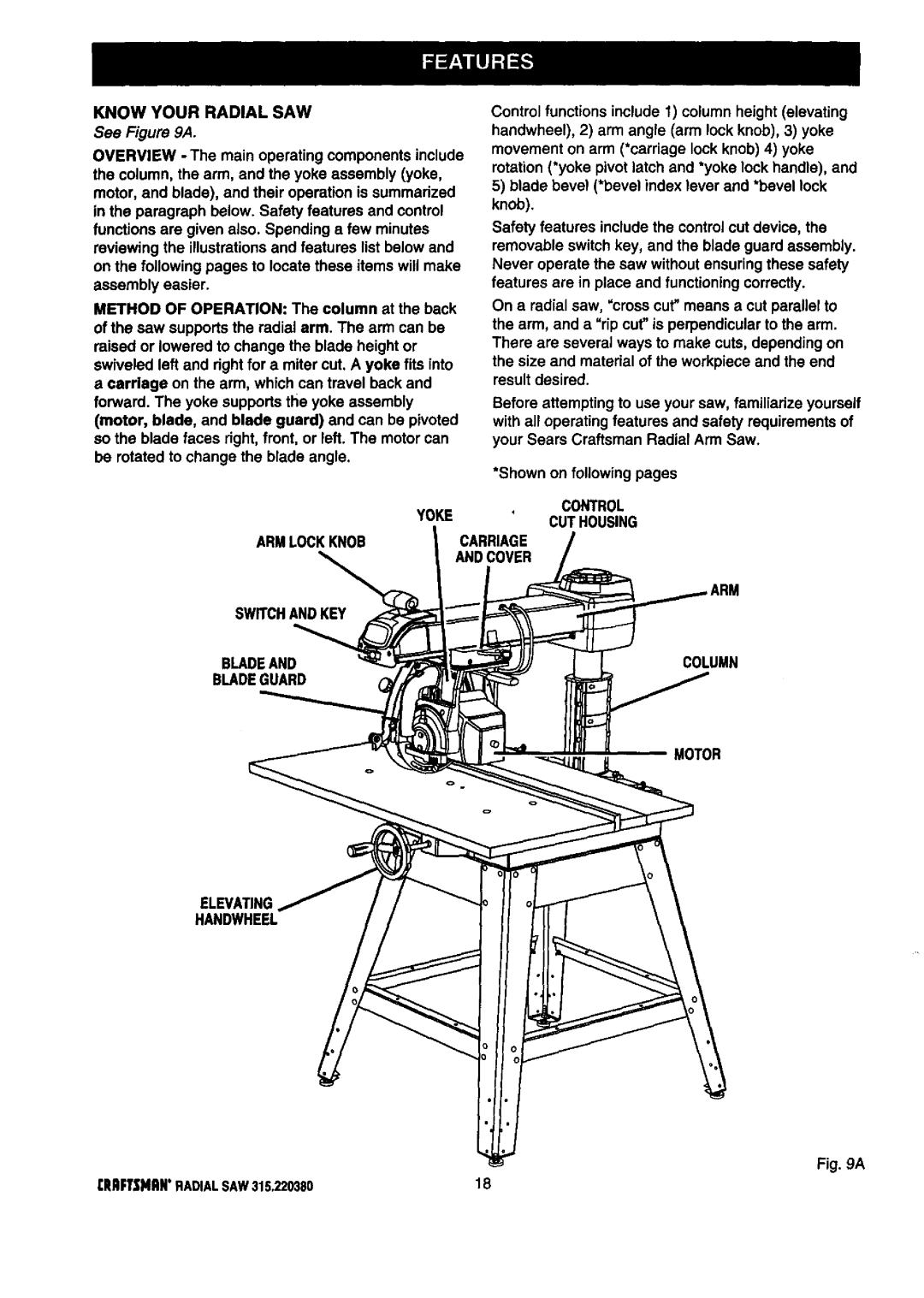
KNOW | YOUR | RADIAL | SAW |
| Control functions include 1) column height (elevating | ||
See Figure 9A. |
|
|
| handwheel), 2) arm angle (arm lock knob), 3) yoke | |||
OVERVIEW | movement on arm (*carriage lock knob) 4) yoke | ||||||
rotation (*yoke pivot latch and *yoke lock handle), and | |||||||
the column, the arm, and the yoke assembly (yoke, |
| ||||||
| 5) blade bevel (*bevel index lever and *bevel lock | ||||||
motor, and blade), and their operation is summarized |
| ||||||
| knob). | ||||||
in the paragraph below. Safety features and control |
| ||||||
| Safety features include the control cut device, the | ||||||
functions |
| are given also. Spending a few minutes |
| ||||
reviewing | the illustrations and features list below and |
| removable switch key, and the blade guard assembly. | ||||
on the following | pages to locate these items will make |
| Never operate the saw without ensuring these safety | ||||
assembly easier. |
|
| features are in place and functioning correctly. | ||||
METHOD | OF OPERATION: The column at the back |
| On a radial saw, "cross cut" means a cut parallel to | ||||
of the saw supports the radial arm. The arm can be |
| the arm, and a "rip cut" is perpendicular to the arm. | |||||
raised or lowered to change the blade height or |
| There are several ways to make cuts, depending on | |||||
swiveled left and dght for a miter cut. A yoke fits into |
| the size and material of the workpiece and the end | |||||
a carriage on the arm, which can travel back and |
| result desired. | |||||
|
| ||||||
forward. The yoke supports the yoke assembly |
| Before attempting to use your saw, familiadze yourself | |||||
(motor, | blade, | and blade | guard) and can be pivoted |
| with all operating features and safety requirements of | ||
so the blade faces right, front, or left. The motor can |
| your Sears Craftsman Radial Arm Saw. | |||||
be rotated to change the blade angle. |
|
| |||||
|
|
|
|
|
| *Shown on following pages | |
|
|
|
| YOKE |
| CONTROL | |
|
|
|
|
| CUTHOUSlNG | ||
|
|
|
|
|
| ||
|
|
| ARMLOCKKNOB | CARRIAGE | |||
|
|
|
| ANDCOVER | |||
SWITCHANDKEV
BLADEANDCOLUMN
BLADEGUARD
MOTOR
ELEVATING
HANDWHEEL
Fig. 9A
[RRFTSNRN'RADIALSAW315.2203801 8
